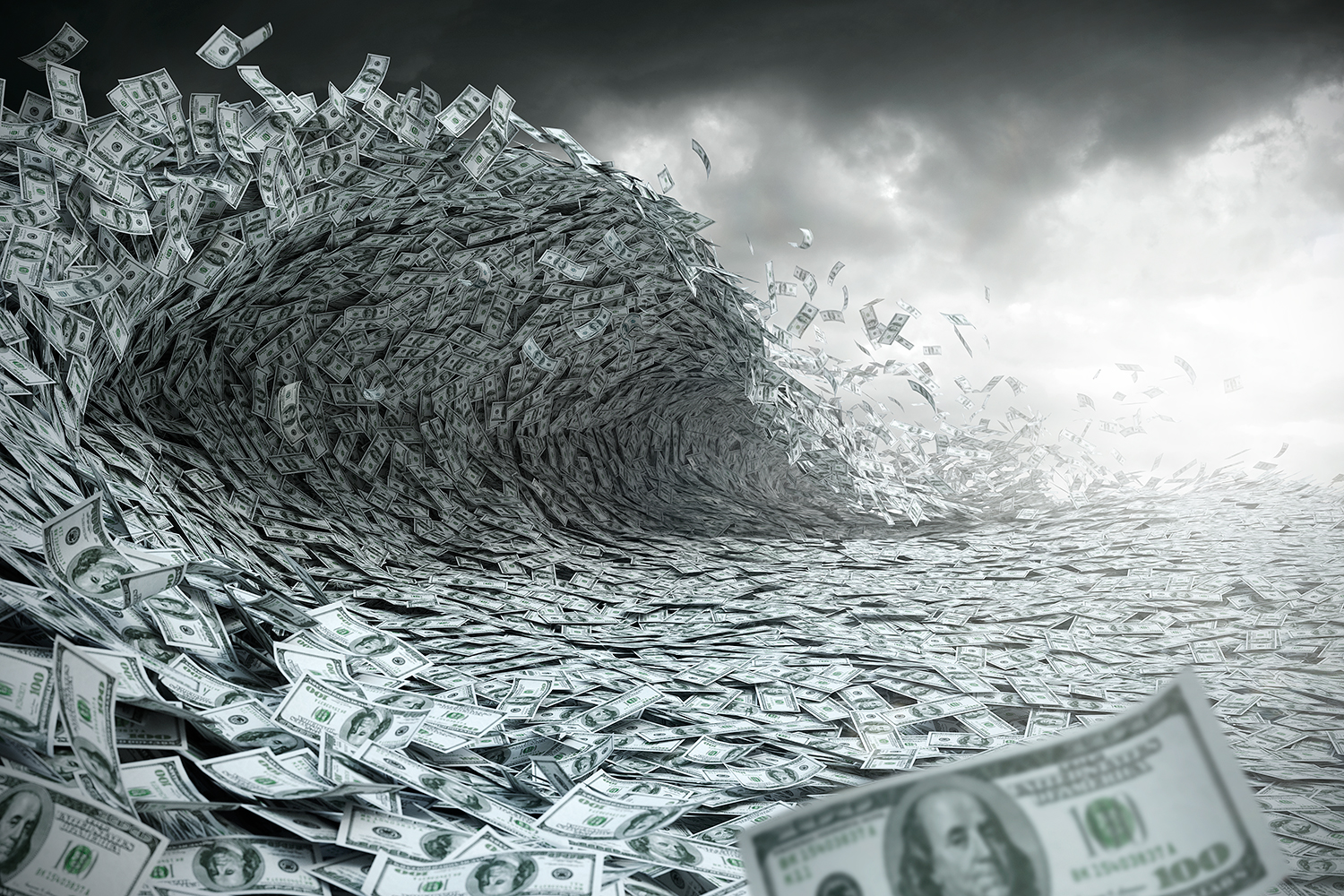
Twenty-sixteen is likely to go down as another record year for passive investments. According to Morningstar, investors plowed $429 billion into ETFs and other index funds in the first 11 months of the year, while yanking some $285 billion from traditional actively managed mutual funds. ETFs probably garnered about half of cash tsunami that flowed into passive investment vehicles.
The rising tide of ETF assets lifted some boats more than others
But the rising tide of ETF assets lifted some boats more than others. Our analysis of ETF flows for 2016 found that investors poured assets into bond funds and emerging markets (and especially emerging market bonds!). Of the 1,053 “plain-vanilla” stock and bond ETFs in our database for the entire year, investors put some $78 billion to work in bond funds, and $161 billion to work in equity funds.
| Figure 1: Flows as a %-age of Assets, 2016 |
 |
| Source: ETF Research Center, FactSet and DTCC |
While the latter number is bigger in absolute terms, it equates to only 9.7% of equity assets at the start of the year. In contrast, the money that flowed into fixed income funds equated to 22.5% of bond fund assets at the start of the year (Figure 1).
Some of the bond flows were put to work betting against bonds, as short interest in the asset class ticked up from 3.1% at the end of 2015 to 3.6% at the end of 2016. Meanwhile, short interest on the equity side declined from 8.3% of shares outstanding to 7.4%, not surprising given the strength of equity markets especially towards year-end.
The large inflows into bond ETFs however only served to keep investors’ overall asset allocation about the same, at about 81% in equities versus 17% in bonds, with the remainder in commodities and other ETPs by our accounting. Higher returns for equities helped make up the difference from the relatively smaller increase in assets.
Within the fixed income space, all categories saw an increase in assets, with emerging markets taking the lead. Long flows (i.e., money flows not used to establish short positions) equaled 44% of assets, but there was also big demand for inflation-protected bonds which saw flows amounting to 37% of assets. Low-yielding Treasuries were the laggards with flows equating to just 9% of assets (Figure 2).
| Figure 2: Fixed Income Flows as a %-age of Assets, 2016 |
 |
| Source: ETF Research Center, FactSet and DTCC. *Note: Long flows only (removes short interest from calculations) |
Meanwhile investors also allocated more money to emerging market equities. Although long flows of about $16 billion into emerging market stocks were dwarfed by the $122 billion plowed into developed markets, those inflows represented 15.4% and 8.6% of starting assets, respectively. Some of this was likely performance chasing, as stocks in the iShares MSCI Emerging Markets ETF (EEM) handily beat their developed-market counterparts in the iShares MSCI EAFE (EFA) in 2016.
The biggest winners in competition for assets between sectors? Financials drew in by far the most assets, at about $32 billion, no doubt due in part to Trump’s election victory. Financials were the best performing U.S. sector between the election through the end of the year. In terms of flows as a percentage of assets however it was the Materials and Energy sectors that were the biggest draw as investors positioned for anticipated higher commodity prices ahead (Figure 3).
| Figure 3: Sector Flows* in $bns (%-age of AUM), 2016 |
 |
| Source: ETF Research Center, FactSet and DTCC. *Note: Long flows only (removes short interest from calculations) |
What’s the take-away from last year’s fund flows? There’s the usual bit of performance chasing perhaps with the money that’s gone into emerging markets and financials, but one could also argue that there was considerable value to be found in these areas which have lagged in recent years. And while we were initially surprised at the strength of flows into fixed income, in reality investors were simply maintaining their overall asset allocation to the sector, which would otherwise have fallen given equities’ good performance last year.
What message do you take from last year’s fund flows?



